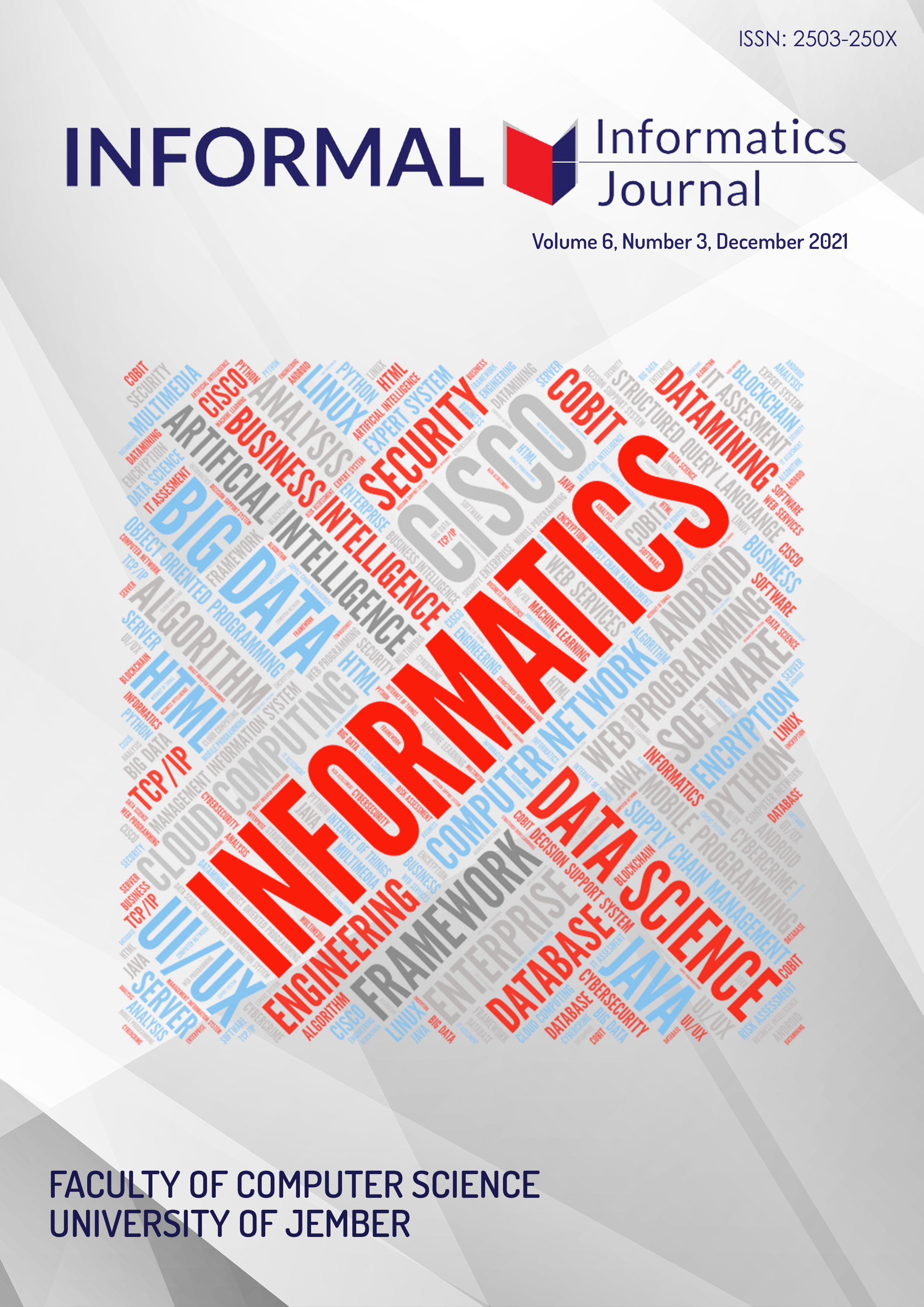Penggunaan Karakter Kontrol ASCII Untuk Integrasi Data Pada Hasil Enkripsi Algoritma Caesar Cipher
DOI:
https://doi.org/10.19184/isj.v6i3.21091Abstract
Cryptography is a technique or method for securing data from other unauthorized parties. The substitution algorithm is the simplest algorithm and is classified as a classic in the field of cryptography, for example the Caesar cipher algorithm. ASCII code (American Standard Code for Information Interchange) is a code that contains characters that can be processed by a computer. By type, not all ASCII characters can be printed by the computer. Some characters are not printed or illegible as usual. These unreadable characters are called control characters. The control character can be used to improve the performance of the Caesar Cipher algorithm, because it focuses on processing text data. The application of control characters uses a simple method but has a complex solution. The results of this study are in the form of a new method with the Caesar cipher algorithm as a classical cryptographic method or technique and ASCII characters as the basis for the development of the ciphertext performance resulting from the encryption process. In testing this method, the success rate reaches 100% in securing the contents of the document with a sample of 500 letters. While the possibility of solving the ciphertext results is classified as difficult because the control characters of the ciphertext results that are illegible will make the decryption result multiple interpretations.



